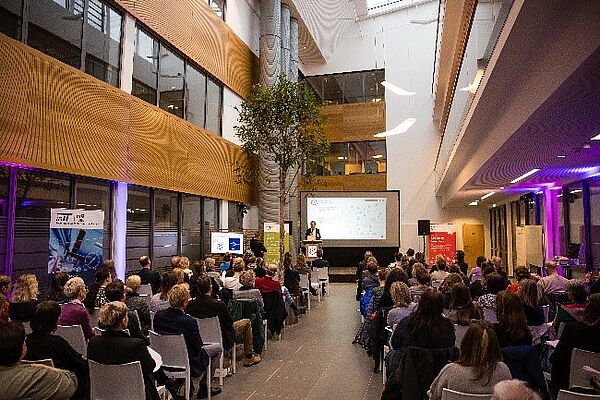"Parkinson's patients need complex care," Redecker explained. The health care system in Germany, however, is not designed to ensure that everyone works well together. This is exactly what the new network aims to achieve. And according to the statistical surveys on the disease, this is urgently needed, because the development is dynamic, especially in Germany. Worldwide, there are about ten million people with Parkinson's disease, 400,000 of them live in Germany, and about 10,000 people are affected in OWL. "In a global comparison, Germany is thus relatively high and has three times the dynamics of other countries," Uwe Borchers, Managing Director of the Centre for Innovation in the Health Care Industry also addressed the figures. His conclusion: "Germany is a high-risk country for Parkinson's disease. This is mainly due to our age structure."
All this makes it necessary to network all the care providers involved in the therapy of a person suffering from Parkinson's disease. Unfortunately, Parkinson's is still not curable. Therefore, more needs to be done for prevention, networking and intersectoral communication, says Borchers, who has also taken over the patronage for the new network.
The East Westphalian network is the fifth in Germany. Twice a year, doctors, pharmacists, physiotherapists, occupational therapists, speech therapists, case managers, neurologists and other professionals will exchange strategies, communication approaches and knowledge transfer possibilities. At the kick-off event, they started in three different workshops.
Professor Dr.-Ing. Volker Lohweg, head of the Institute Industrial IT (inIT) and co-founder of the new network, explained the connection between medicine and technology. The two are growing ever closer together at various points, he said. "We have to develop this further for the benefit of patients," said Lohweg. For example, inIT developed a Parkinson's app some time ago that can be used to store movement disorders as well as medication and various therapy approaches.
Head physician Redecker reminded the approximately 100 guests that Parkinson's syndrome can lead to many additional symptoms besides the movement disorder. While some patients could cope very well with the disease for many years, the general condition of other patients would deteriorate very quickly. "Every single specialist involved in a Parkinson's therapy has their own view on it. Gathering these insights will also broaden the doctor's view of the patient, whom he might otherwise only get to see for a maximum of 30 minutes a quarter," says Professor Redecker, MD. In this way, the network can also improve the quality of life of those affected, says the head physician.
In three workshops, the participants then discussed supply problems in OWL, what should be done better and how to find starting points for improvements.



![[Translate to Englisch:] [Translate to Englisch:]](https://www.init-owl.de/fileadmin/_processed_/0/0/csm_LohwegP_f800b061a4.jpg)